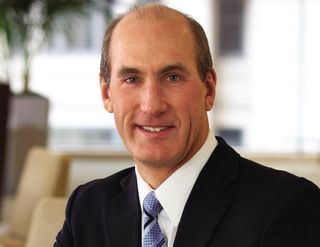Time Warner Outruns Peers in Affiliate-Fee Race

Time Warner, understandably preoccupied with its pending $108.7 billion acquisition by AT&T, still managed to lap its media company peers on the affiliate-revenue front last year and is on pace for more of the same in 2017, according to UBS media analyst Doug Mitchelson.
That growth, especially during a period when programmers are pressured by falling ratings, skinny bundles that lock them out of millennial-focused packages and over-the-top distribution, could be a key reason why the programmer was so attractive to AT&T in the first place.
AT&T has said repeatedly that content will drive the future — and Entertainment Group chief John Stankey reiterated that point at the Mobile World Congress conference in Barcelona, Spain, last week, telling the audience that programming is what will make AT&T relevant.
“Content that is compelling matters,” Stankey said at the conference.
Content that is compelling also makes money.
‘TIMING WAS GOOD’
In a recent deep dive into the programming industry, Mitchelson pointed out that Time Warner’s affiliate fee growth in Q4 of 2016 was 15%, more than double that of its closest peer, 21st Century Fox, at 7.4%.
Affiliate-fee growth actually declined for other programmers last year, according to Mitchelson, as 2016 was marked by declining subscriber rolls as customers cut back on various distribution cords in favor of OTT services and skinnier bundles.
Time Warner’s Turner division in fact has seen similar declines — the company averaged about a 2% loss in subscribers last year, about the same as its peers — yet has managed to keep affiliate-fee growth humming.
Part of that is because Time Warner struck carriage deals in 2015 and 2016 with major distributors like AT&T and Dish Network that usually have higher increases in the early years.
“The timing was good,” Telsey Advisory Group media analyst Tom Eagan said. Turner had earlier issued guidance for mid-teen percentage growth for 2016, which it delivered handily, Eagan noted. He said domestic affiliate-fee growth is expected to rise another 13% to 14% at Turner in 2017, leveling off a bit to 13% growth in 2018.
Mitchelson doesn’t expect the affiliate train to slow down this year, either. He’s predicting a 12.9% increase in fees for Time Warner in 2017, while Fox is expected to grow by about 8.2% in the same period.
Credit Suisse media analyst Omar Sheikh also was encouraged by the affiliate fee increases. He expects 15% growth in 2017 followed by a 10% rise in each of the years between 2018 and 2020. At premium channel HBO, which had a 5% affiliate fee increase in 2016, Sheikh predicts fees will rise 6% in 2017-2018 and 5% in 2019-2020.
Helping out HBO’s bottom line has been its standalone OTT product, HBO Now. Launched in April 2015, HBO Now has about 2 million subscribers and growing.
“We expect growth to be driven by affiliate renewals and strength at HBO Now,” Sheikh wrote, helping to offset rising programming costs — up 7% in 2016 and estimated to rise 9% in 2017 — “and demonstrates that the company is executing well on its opportunity to grow domestic subscribers, which management has noted is HBO’s ‘most important long-term growth driver.’ ”
Just as in 2016, key to Turner’s future growth will be its ability to secure healthy increases with existing distributors as well as with new digital distributors. Turner seems to be out of the mix at least initially in Google’s new YouTube TV offering — the 30-channel, $35 monthly video service currently doesn’t have any Turner or Viacom networks in its lineup. That’s likely to change, Eagan said, but in order to keep the $35 price point, more expensive networks like Turner will likely be available on separate tiers or packages for an additional charge.
MILESTONE MOMENTS AHEAD
On the traditional carriage front, Turner’s Comcast affiliate agreement comes due in the next few months, and the programmer is expected to be part of Hulu’s live-TV streamed offering scheduled to be release later this year. Time Warner is a part owner of Hulu, along with The Walt Disney Co., Fox and Comcast’s NBCUniversal.
The Hulu deal could be key for Turner. The much anticipated but scantily described offering — expected to have a $40 monthly price point — could set the tone for similar offerings in the future.
Turner has been an enthusiastic participant in OTT services: Its AT&T distribution pact in September was one of the first for the telco’s DirecTV Now over-the-top service, which launched in December and has about 200,000 subscribers.
Eagan said that while the number of bundled-streaming services — including Sony PlayStation Vue, Sling TV and more on the way — is growing, most have been launched by existing pay TV distributors. Programmer-owned Hulu could offer a new perspective.
Eagan said channel-driven streaming services such as CBS All Access, which has about 2 million customers, have fared better than operator-led services like Sling TV, which has about 1.1 million subscribers.
“The question is what is going to happen when you get all of the individual channel OTT services and the package runs together,” Eagan said.
Multichannel Newsletter
The smarter way to stay on top of the multichannel video marketplace. Sign up below.
